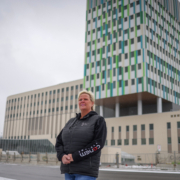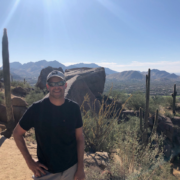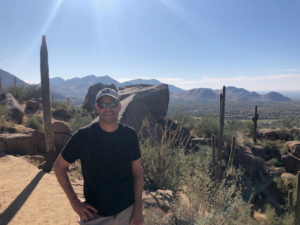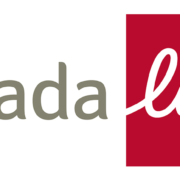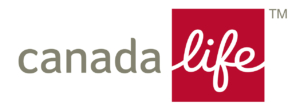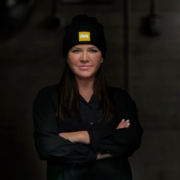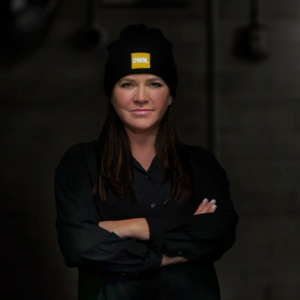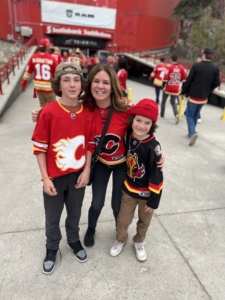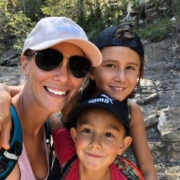How Sher Harkins Owns Cancer
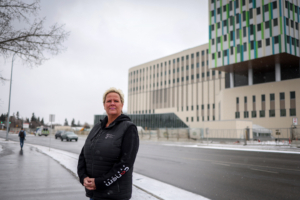
Sher Harkins would make this daily walk from her chemo appointments back to work on the new Cancer Centre at Foothills Medical Centre. Leah Hennel / AHS
For years, Sher Harkins had a little voice in the back of her head wondering not “if” — but “when” — she would get cancer. She’s no stranger to cancer and has lost many loved ones, including both her parents (dad in 1995, mom in 2017).
In April 2018, Harkins had just started her new job as an electrical material purchaser for the new Calgary Cancer Centre, when her doctor called to say: “We found cancer”.
“Those words go through you, and it echoes. It really is like something out of a movie. I sat there, stunned. I cried a little.”
As she put the date of her oncologist appointment in her calendar, she told herself: “I guess I have a fight ahead of me.”
Ultimately, that appointment led to a journey of treatments which included five rounds of weekly chemo, 25 consecutive days of radiation, followed by three weekly doses of brachytherapy (a type of internal radiation therapy in which seeds, ribbons or capsules that contain a radiation source are placed in your body, in or near a tumour).
Harkins says she felt incredibly grateful to work at the new Calgary Cancer Centre construction site during this difficult time. “Could I be in a better place to do all this? I mean really. How blessed am I? I work right here. It was spring, the sun was shining, birds were singing — and I am right here. So, I dug my heels in and went about kicking cancer’s butt!”
She worked every day through most of her treatments, and also walked a quick-paced 10 minutes over to the Tom Baker Cancer Centre.
“Admittedly, some days, I walked slower and the pep in my step wasn’t what it started off at. In the end, I couldn’t work for the final three weeks for my brachytherapy. It took just too much out of me,” she says.
“I didn’t tell a lot of people at work what was going on, but the people who did know told me that if they didn’t know I had cancer, they would have had no idea. I took that as a great compliment to my strength and tenacity.”
Harkins takes pride in her role in the cancer centre, taking every opportunity to share with her doctors, nurses, and radiologists that she was purchasing all the electrical material for the new building. In the face of months of treatments, her passion as a purchaser remained strong.
“I’ve watched and participated first-hand in building this new world-class cancer centre. Now when I look at this big, beautiful building, I see me. I see my journey. I see all of us survivors.
“I see all the construction workers who came to work every single day, rain or shine, freezing cold, extreme heat, the smoky summers and through COVID-19. They are showing up every day and getting it done, for all of us.
Harkins adds: “I know that if I am ever a patient in the Calgary Cancer Centre, I’ll be in the best place, with the best people, receiving the best care.”
This article was written by Jennifer Green and originally published at albertahealthservices.ca

